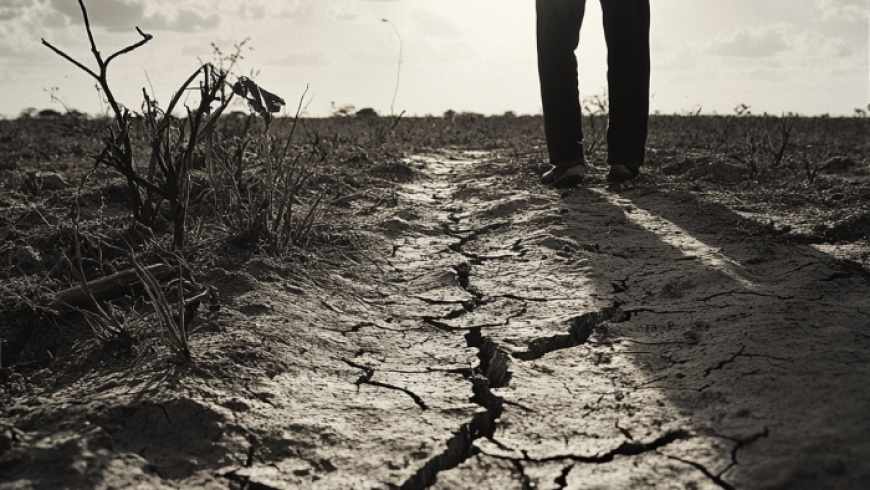
Questions over local REDD+ fund management capacity open up critical role for NGOs and Environmental Funds
10/11/2010 16:57
• Ongoing uncertainty in governance and distribution framework
• NGO and Environmental Funds could unlock private sector investment in REDD+
NGOs and Environmental Funds could play a vital role in dispelling the uncertainty slowing the delivery of $4.5bn fast start funding committed at the Climate Summit in Copenhagen, and in securing the future flows of private sector investment. These are amongst the key findings in the first detailed analysis of how current REDD+ funding could be managed and circulated in the future within multiple recipient nations.
The new report, ‘National REDD+ funding frameworks and achieving REDD+ readiness’ was commissioned by The Conservation Finance Alliance (CFA), and produced by PwC, and was launched at the UN summit on Biodiversity and Ecosystems in Nagoya, Japan.
It explores six in depth case studies (Brazil, Indonesia, DRC, Peru, Madagascar, Cambodia) and identifies that the total private and public REDD funds assigned to date range from $250-300 million. In addition, $1 billion in commitments from the Norwegian government will fund future national REDD activities in Indonesia with another $1 billion for Brazil. This is a small fraction of the $17-33 billion per year figure suggested by the Eliasch Review that is necessary to halve deforestation by 2030.
A further analysis of stakeholders in 12 REDD+ nations said NGOs and Environmental Funds would fill a governance, community engagement and fund management capacity gap and could facilitate the flow of public and private sector investment at scale over the next five years to meet international carbon reduction targets.
The study highlights the practical capacity and governance issues facing donor and recipient countries, in the roll out of Copenhagen’s ‘fast start’ funding and prospects for long term engagement with private sector investors.
Chris Knight, Director, Forestry and Ecosystems, PwC said:
“Ensuring sufficient funds are allocated to REDD+ activities involves building trust in every step of the REDD+ process from investors in countries committing the funds, all the way to forest dependent communities on the ground.
“Environmental Funds could link every investment to a benefit delivered, giving the private sector the confidence to commit and deliver.”
The study found that:
• Uncertainty has not stopped the flow of small scale private sector funding into projects in the voluntary forest carbon market in anticipation of the development of compliance based forest carbon schemes.
• While reasonable progress has been made with the commitment of funds to specific projects, the distribution and deployment of funds has not yet reached the scale expected. A significant barrier to this has been the lack of relevant national funding mechanisms in place for distributing REDD+ funding and revenue in an equitable, efficient and effective manner.
• Capacity building locally, in the processes, governance and skills needed to manage multi-million dollar donation commitments by the international community would continue in many key REDD+ states until 2015.
• Environmental Funds are in a unique position to engage with the private and public sector and generate investment in geographic regions where high investment risk is perceived given their reputation as transparent and trusted fund managers.
• Benefit Sharing, a key topic for the UN summit in Nagoya, could gain from local NGOs design and implementation in local communities and help raise awareness amongst these communities of the existence and objectives of REDD+.
• Local NGOs could help local communities in negotiating REDD+ deals with external stakeholders, monitor social and environmental safeguards, and test REDD+ project models on behalf of government agencies.
Following detailed analysis of funding flows from international commitments to local communities, the study makes a series of recommendations for greater efficiency:
• Creation of new REDD+ fund management bodies with representation from government and non – governmental agencies at board level.
• Formalised partnerships between national and sub-national NGOs with recognised track records.
• Application of and training for forest communities in GIS decision tools for land use planning
• Creation of new REDD+ specific environmental funds, managing both grant based funding and carbon market revenues
• Clarification of linkage between land and carbon asset ownership and implications for REDD+ project development
By 2015, the majority of interviewees expect the bulk of REDD+ funding to flow to active REDD+ projects, broadly splitting funding between environmental funds and government ministries.
• NGO and Environmental Funds could unlock private sector investment in REDD+
NGOs and Environmental Funds could play a vital role in dispelling the uncertainty slowing the delivery of $4.5bn fast start funding committed at the Climate Summit in Copenhagen, and in securing the future flows of private sector investment. These are amongst the key findings in the first detailed analysis of how current REDD+ funding could be managed and circulated in the future within multiple recipient nations.
The new report, ‘National REDD+ funding frameworks and achieving REDD+ readiness’ was commissioned by The Conservation Finance Alliance (CFA), and produced by PwC, and was launched at the UN summit on Biodiversity and Ecosystems in Nagoya, Japan.
It explores six in depth case studies (Brazil, Indonesia, DRC, Peru, Madagascar, Cambodia) and identifies that the total private and public REDD funds assigned to date range from $250-300 million. In addition, $1 billion in commitments from the Norwegian government will fund future national REDD activities in Indonesia with another $1 billion for Brazil. This is a small fraction of the $17-33 billion per year figure suggested by the Eliasch Review that is necessary to halve deforestation by 2030.
A further analysis of stakeholders in 12 REDD+ nations said NGOs and Environmental Funds would fill a governance, community engagement and fund management capacity gap and could facilitate the flow of public and private sector investment at scale over the next five years to meet international carbon reduction targets.
The study highlights the practical capacity and governance issues facing donor and recipient countries, in the roll out of Copenhagen’s ‘fast start’ funding and prospects for long term engagement with private sector investors.
Chris Knight, Director, Forestry and Ecosystems, PwC said:
“Ensuring sufficient funds are allocated to REDD+ activities involves building trust in every step of the REDD+ process from investors in countries committing the funds, all the way to forest dependent communities on the ground.
“Environmental Funds could link every investment to a benefit delivered, giving the private sector the confidence to commit and deliver.”
The study found that:
• Uncertainty has not stopped the flow of small scale private sector funding into projects in the voluntary forest carbon market in anticipation of the development of compliance based forest carbon schemes.
• While reasonable progress has been made with the commitment of funds to specific projects, the distribution and deployment of funds has not yet reached the scale expected. A significant barrier to this has been the lack of relevant national funding mechanisms in place for distributing REDD+ funding and revenue in an equitable, efficient and effective manner.
• Capacity building locally, in the processes, governance and skills needed to manage multi-million dollar donation commitments by the international community would continue in many key REDD+ states until 2015.
• Environmental Funds are in a unique position to engage with the private and public sector and generate investment in geographic regions where high investment risk is perceived given their reputation as transparent and trusted fund managers.
• Benefit Sharing, a key topic for the UN summit in Nagoya, could gain from local NGOs design and implementation in local communities and help raise awareness amongst these communities of the existence and objectives of REDD+.
• Local NGOs could help local communities in negotiating REDD+ deals with external stakeholders, monitor social and environmental safeguards, and test REDD+ project models on behalf of government agencies.
Following detailed analysis of funding flows from international commitments to local communities, the study makes a series of recommendations for greater efficiency:
• Creation of new REDD+ fund management bodies with representation from government and non – governmental agencies at board level.
• Formalised partnerships between national and sub-national NGOs with recognised track records.
• Application of and training for forest communities in GIS decision tools for land use planning
• Creation of new REDD+ specific environmental funds, managing both grant based funding and carbon market revenues
• Clarification of linkage between land and carbon asset ownership and implications for REDD+ project development
By 2015, the majority of interviewees expect the bulk of REDD+ funding to flow to active REDD+ projects, broadly splitting funding between environmental funds and government ministries.














 3287.99
3287.99 1275.09
1275.09
